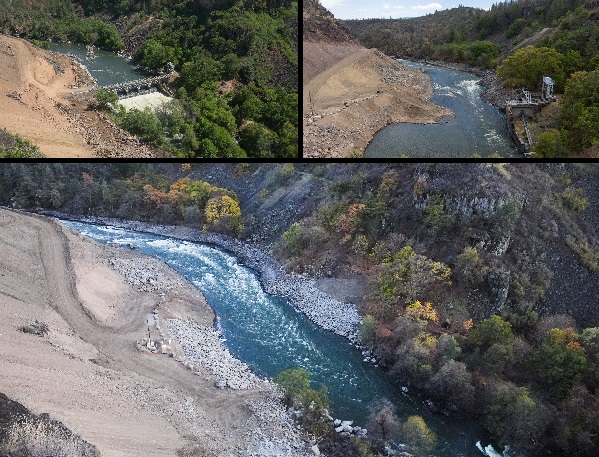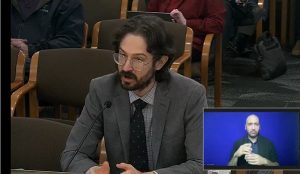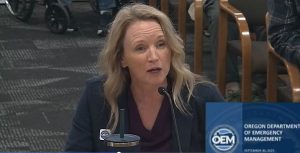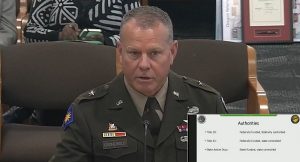Klamath River returns to Kitty Ward’s canyon
2 min read
from Klamath River Renewal Corporation
The Klamath River returned to its natural course through Ward’s Canyon, after crews wrapped up work on removal of the Copco No. 2 Dam and its diversion infrastructure.
“Seeing the Klamath River flow through this canyon after being diverted for nearly a century is inspiring,” said KRRC’s Laura Hazlett, chief operating officer of the entity tasked with removing the four lower Klamath hydroelectric dams. “It makes me excited for everything else that is to come with the removal of the other three dams.”
Completed in 1925, Copco No. 2 diverted the river’s flows into a tunnel system that sent the water to a downstream powerhouse, essentially dewatering the 1.7-mile-long canyon.
Without the river’s presence in the canyon, trees grew in the riverbed. They would have died off after being exposed to consistent river flows, creating a hazard for future recreationists. These trees were removed in September in collaboration with area tribes.
Removal of the dam structure was completed in September. During October crews removed the remaining diversion infrastructure, graded the river channel, and performed erosion control. This work prepares the river canyon for consistent river flows which the canyon hasn’t seen in 98 years.
“Copco No 2 is the first dam to be removed due to its small stature, location, and lack of reservoir,” noted KRRC CEO Mark Bransom. “While Copco No. 2 was significantly smaller than the other dams slated for removal, it still had a significant impact on the river.”
Copco No. 2 was located right below Copco No. 1 in the steep river canyon named for Kitty Ward, a Shasta woman who lived in the valley now submerged by the Copco No. 1 reservoir.
Flows in the canyon are currently fluctuating as crews prepare Copco No. 1 for the slow draining of the reservoirs, known as drawdown. The remaining three dams—Copco No. 1, Iron Gate, and JC Boyle—are slated for removal next year.
Drawdown is expected to start in January and last three to five months, depending on the amount of water entering the system as a result of spring runoff. Once drawdown is complete, restoration and deconstruction activities will begin in earnest.
All three dams are scheduled to be completely removed by November 2024. Restoration activities are expected to continue for years to ensure restoration success.






